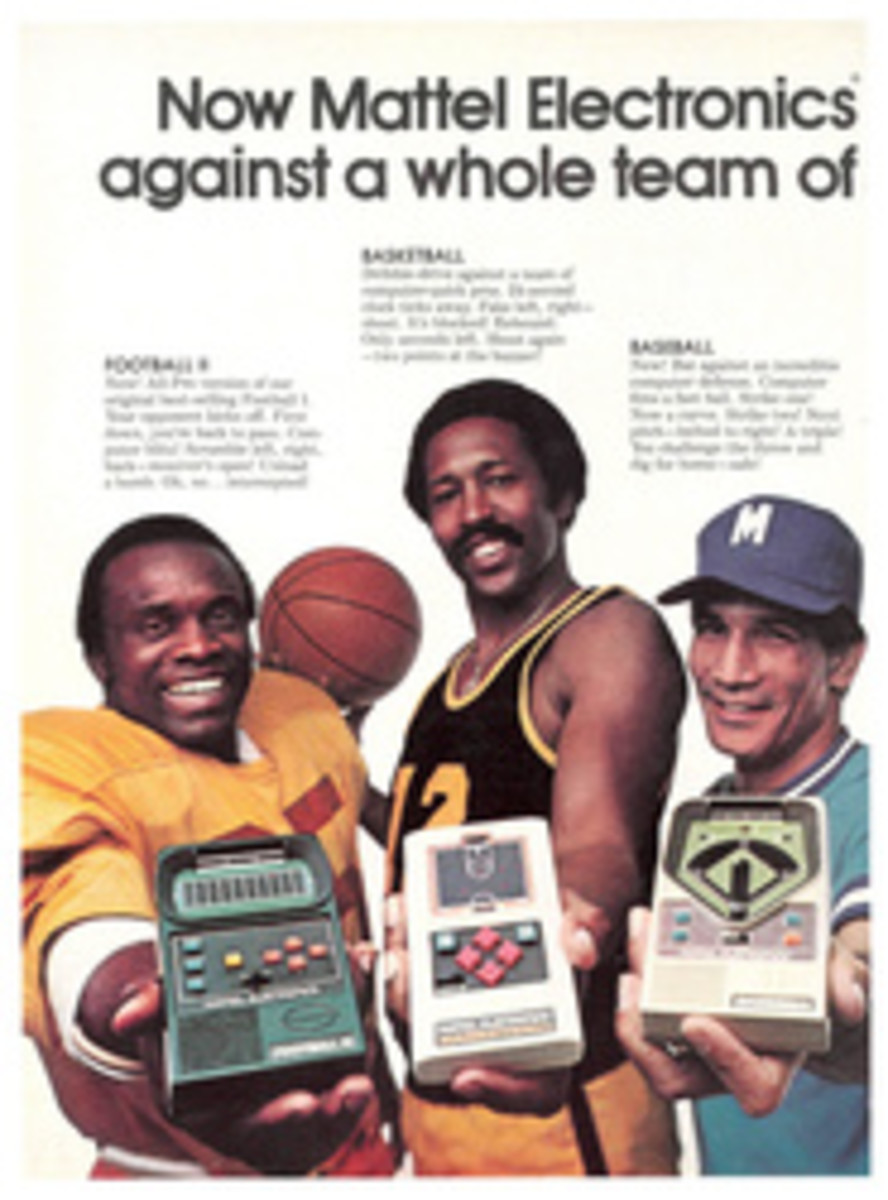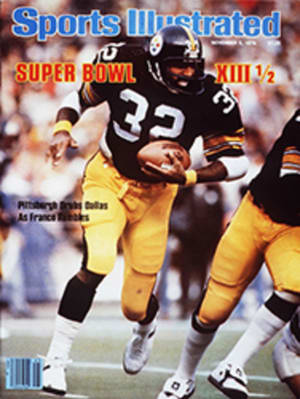
HOSEA HAD 'EM SINGING HOSANNA
In the end, the job of determining the outcome of last Saturday's showdown between two giants of the Southwest Conference—undefeated Houston and undefeated Arkansas—was left to the smallest player on the field. That was Ismael Ordonez, the Razorback place-kicker, who stands 5'6½" in his kicking shoes, weighs—he claims—153 pounds and doesn't look old enough to be Arkansas' water boy, much less its giant killer. Yet, with four seconds remaining to play and the No. 4-ranked Razorbacks trailing the No. 6-ranked Cougars 13-10, it was Ordonez whom Arkansas Coach Lou Holtz dispatched to save the day.
Ordonez' task was a relatively easy one by his standards: kick a 41-yard field goal with a strong tail wind. True, a three-pointer would only tie the score, but for the Razorbacks that would be a victory of sorts. The winner of the Southwest Conference goes to the Cotton Bowl. When two or more teams end up tied atop the standings, the bowl bid goes to the school that has played there least recently. Among this year's title contenders—Houston, Arkansas and Texas—that would be the Razorbacks, who haven't spent New Year's Day in Dallas since 1976. Arkansas had taken a big step toward the 1980 Cotton Bowl a week earlier when an Ordonez field goal provided the deciding points as the Razorbacks handed Texas its only 1979 loss, 17-14.
Arkansas couldn't have left its fate in more competent hands. Or, rather, feet. Last year Ordonez, who is called Ish, became the first kicker in SWC history to lead the conference in scoring. He converted his last six field-goal attempts of 1978, and by the time he trotted onto the artificial turf with four seconds remaining in last Saturday's game, he had extended that streak to an NCAA-record 16. And done it under pressure. Four weeks ago Ordonez had surpassed the old mark, 11, held by four players, with a 44-yarder that beat TCU 16-13 with seven seconds left in the game.
As Ordonez positioned his tee, the 43,319 fans in Razorback Stadium rose howling to their feet. It was that perfect match of a man and a moment that only sport can provide. The snap came back, the ball was put in place, and Ordonez, head down, swung his foot into it. Quickly he looked up, then just as quickly turned his back and swung his foot again, this time in disgust. In the center of the line, Houston's 6'5", 265-pound Hosea Taylor had leaped high, stretching his hands skyward, only to be clobbered in the head by the ball, which caromed off his helmet and was still rolling down-field as the gun sounded.
The win raised Houston's record to 7-0, the best start ever by a Cougar team. This was also Houston's 200th career victory, not bad for a school that played its first game in 1946. The Cougars didn't join the Southwest Conference until 1976. "We're the new boys on the block," says Frank Schultz, Houston's sports information director. "We don't have any real tradition yet." Then again, maybe the Cougars do. They are making a tradition out of going to the Cotton Bowl. Houston has made it twice in its first three years in the SWC and will head there again this season unless Texas derails them two weeks hence and throws the conference into a tie that could yet put the Razorbacks in the Cotton Bowl.
Despite these recent successes and the fact that Houston has finished in the Top 20 in 10 of the last 13 seasons, the Cougars have a Dangerfield complex—they groan that they don't get no respect. The most recent example came just two weeks ago when Houston shellacked SMU 37-10 and nonetheless dropped from fifth to sixth in the AP poll. The problem is apparently one of image. Back in the 1960s, when Houston was an independent constantly being snubbed in its attempts to join the Southwest Conference, it gained a reputation as an outlaw school, a notion fueled when it was put on NCAA probation in 1966 and strengthened further when it went back on probation two seasons ago. Over the years the school's academic credentials had frequently been ridiculed, and even this year, at Texas A&M, Aggie fans taunted Houston with an old epithet: "Beat the hell out of Cougar High." "We have to get our image to where our program is," says Houston's upbeat new athletic director, Cedric Dempsey. "Right now it's 10 years behind."
Houston's football success may be 10 years ahead of what could reasonably have been expected, and this can be attributed directly to Bill Yeoman, who has been coaching the Cougars since 1962. Since then, Houston has led the nation in total offense three times. Yet even Yeoman has been slighted—as in 1976 when he turned what had been a 2-8 team into a Cotton Bowl champion—the best he could do was finish second in Coach of the Year balloting.
This year Yeoman is displaying his coaching prowess once again by winning without his customary offensive firepower. Gone from the Cougars are last year's starting quarterback (conference MVP Danny Davis), two 1,000-yard rushers (Emmett King and Randy Love) and Wide Receiver Willis Adams, who was drafted in the first round by Cleveland. As a result Houston has had trouble scoring. But Cougar opponents have had even more trouble getting on the board. Arkansas was the fifth team in seven games to score only 10 points against Houston. The Cougar defense is led by two massive tackles—Taylor, who in high school was named the top defensive player in the nation by Parade magazine, and 6'7" Leonard Mitchell. Mitchell is also a starter for Houston's basketball team at center, a position he plays with all the finesse of a 272-pound defensive tackle.
Still, Holtz was more worried about containing Yeoman's offense than moving the ball. "Patience is not a virtue of all teams," he had said. "I don't think Houston will be content to beat us tackle to tackle. I'm going to give them the inside in order to take the outside away. Sooner or later they're going to want to go out there, and we'll be ready."
On Houston's first possession the Cougars, as predicted, ran impressively to the inside and used 15 plays to drive from their own 20 to the Arkansas two. From there they could easily have punched the ball up the middle for the score. Instead, on first down Quarterback Delrick Brown sprinted to his right, encountered traffic and attempted an option pitchout to Running Back John Newhouse, whose cousin Robert plays for the Dallas Cowboys. The pitch was low, Newhouse bob-bled it, and Arkansas Cornerback Trent Bryant recovered. Score one for Holtz.
Holtz planned a conservative attack, running inside at Houston's strength—"Because," he said, "that's also where we're strongest." This strategy paid quick dividends, too. On the first Razorback play from scrimmage, freshman Running Back Gary Anderson burst 46 yards off right guard. Four plays later a 35-yarder by Ordonez gave Arkansas a 3-0 lead. Then, in the second quarter, the Razor-backs marched 80 yards in 12 plays for their only touchdown. In that drive Quarterback Kevin Scanlon, who broke nearly all of Joe Namath's career passing records at Beaver Falls (Pa.) High School, completed three first-down passes before covering the final 34 yards himself on two consecutive runs.
Unfortunately, in between these two scores came the first of three disastrous turnovers of the sort that Holtz had figured his cautious offensive plans would eliminate. Indeed, before the game, he stated flatly, "I don't think we'll fumble." As an afterthought, he added, "But then I'm not carrying the ball." Five plays after Bryant's fumble recovery had stopped the Cougars' opening drive, Anderson fumbled at Arkansas' 25-yard line and Grady Turner, a Houston linebacker, fell on the ball. The Cougars quickly turned that error into a touchdown and a 7-3 lead. The TD came on a five-yard run by Terald Clark, who led all rushers in the game with 135 yards. After Scanlon's score had put Arkansas back in front 10-7, the Razorbacks made their second costly turnover. Midway through the third quarter they marched 58 yards to the Houston four. A score would have opened up a 17-7 lead. Instead, Scanlon fumbled while attempting a hand-off to Anderson, and Mitchell recovered.
Houston tied the score early in the fourth quarter when Cornerback Kenny Hatfield, who doubles as the Cougars' placekicker, booted a 37-yard field goal into a wind gusting to 25 mph, a remarkable kick in light of the fact that earlier he had been short from 46 yards with a gale at his back. The Cougars got their chance to go ahead when Turner, who had 19 tackles in the game, got his second turnover by intercepting a Scanlon pass. This time Houston played it close to the vest, marching 61 yards and eating up most of the remaining 6:08 by running trap plays through the middle of the Arkansas line. Twice in that drive the Razorbacks appeared to have recovered Cougar fumbles, but both times the referee ruled that play had been whistled dead before the ball popped loose. With 1:12 remaining, Hatfield kicked a 19-yard field goal to put Houston ahead 13-10.
But Arkansas still had that one final, fatal fling. Ordonez' game-ending attempt was set up by a play involving his counterpart, Hatfield. With 12 seconds left and the ball at midfield, Scanlon lobbed a desperation pass to Wide Receiver Robert Farrell. Hatfield, who's a 6-footer, was the defender, and the 6'5" Farrell outjumped him for the ball. "He's so much taller that he could go up with two hands while I could only go up with one," Hatfield explained. "I got my fingers on the ball, but it seemed to stick to his hands like glue."
On came Ordonez. But another of his storybook endings was simply not to be. And what made victory all the sweeter for the image-conscious Cougars was that one of their players had clinched this game by using his head.
PHOTO
JAMES DRAKE
Ordonez (3) had converted 16 straight field-goal tries before Taylor (90) used his head to break the string

